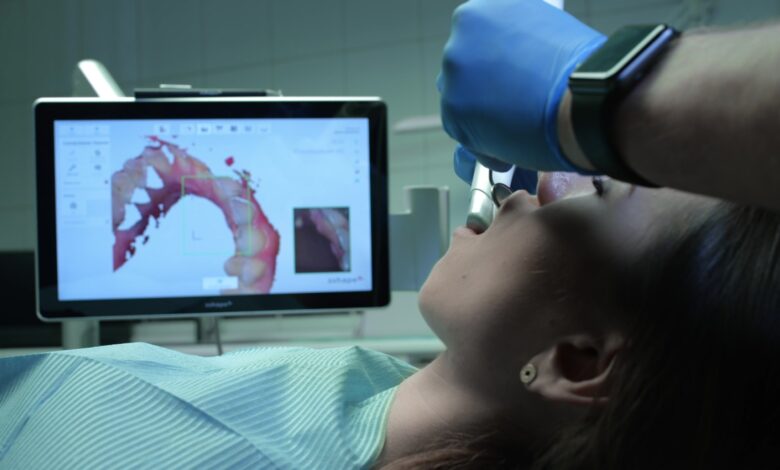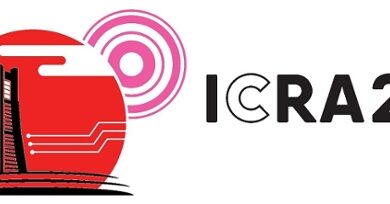Advanced Robotic Solution for Dental Implants

In a recent study published in the journal BDJ Open, researchers proposed an integrated robotic system called the high-precision all-in-one, dual-arm robot for oral implant surgery (HADAROIS) that can perform oral implant surgery with high efficiency and safety. They aimed to provide a promising solution for advancing the field of dental implantology.
Background
Oral implant surgery involves replacing missing teeth with artificial ones anchored to the jawbone. This technique can significantly improve the function and appearance of the mouth, but it demands high accuracy and precision in the placement of the implants.
Researchers have explored the use of medical robots in oral implant surgery to enhance accuracy and convenience. Medical robots are devices capable of performing surgical tasks with the assistance or supervision of human surgeons. These robots offer several benefits, including increased precision, efficiency, minimally invasive procedures, and enhanced safety.
However, most existing robotic systems for oral implant surgery have notable limitations, such as lengthy preoperative preparation, complex operation, high costs, and susceptibility to occlusion or interference during the procedure.
About the Research
In this paper, the authors introduced HADAROIS, a new oral implant surgery navigation and positioning system. This system consisted of a support body, a control panel, two robotic arms, and an image acquisition device. The upper arm held the surgical tool, known as the “oral implant handpiece,” while the lower arm featured a miniature multi-eye gaze positioning camera. The system also included three key modules for controlling the movement and function of the robotic arms: the occluded target tracking module (OTTM), the planting plan development module (PPDM), and the path formulation module (PFM).
The OTTM was responsible for the optical positioning and tracking of the target implant site, identifying and avoiding occlusions caused by medical devices, the human body, or organs. The PPDM extracted computed tomography (CT) image data and generated an optimal implant plan based on the patient’s anatomical information.
HADAROIS utilized cone-beam CT (CBCT) images to obtain anatomical information about the patient’s oral cavity, generating an optimal implant plan. The PFM determined the posture, position, and movement speed of the two robotic arms, coordinating their movements in real time to ensure a seamless surgical process. The system then controlled the movement and rotation of the two robotic arms to perform the implant surgery according to the planned path.
The system was designed to reduce preoperative preparation time and simplify the operation process by integrating the dual arms and eliminating the need for calibration or registration. It allowed for dynamic adjustment of the surgical plan and provided real-time feedback and intervention by the surgeon. HADAROIS was expected to improve the accuracy, efficiency, and safety of oral implant surgery.
Research Findings
The researchers evaluated the accuracy and feasibility of the system through simulation experiments and clinical trials. In the simulation experiments, they used five different dental models and performed ten implant surgeries. They measured the angular and entry point errors of the implant placement and found that the average angular error was 1.54° and the average entry point error was 0.33 mm, both within the clinically acceptable range.
The study compared these outcomes with other published studies and found that the system achieved the lowest angular error and entry point error among all the studies. In the clinical trials, HADAROIS was used to perform oral implant surgeries on six patients, with accuracy measured using CBCT images.
The average angular error was 2.1° and the average entry point error was 0.39 mm, which was also within the clinically acceptable range. Furthermore, the study demonstrated excellent accuracy and positioning capabilities in clinical practice, and the patients were satisfied with the aesthetic and functional outcomes of the implant surgery.
Applications
The system has potential applications in oral implant surgery, as it can provide high-precision navigation and positioning for implant placement. It can reduce preoperative preparation time and simplify the operation process, thereby improving the efficiency and safety of the surgery.
Additionally, it offers real-time guidance and adjustment, enhancing the flexibility and adaptability of the procedure. The system can also improve patient satisfaction and comfort by reducing surgical trauma and achieving better aesthetic and functional results.
Conclusion
In summary, the novel system proved to be effective for oral implant surgery. It addressed the limitations of existing robotic systems, such as lengthy preoperative preparation, complex operation, high cost, and susceptibility to occlusion or interference. The system demonstrated high accuracy, efficiency, and safety in both simulation experiments and clinical trials.
Moving forward, the authors suggested that their system could be further improved and optimized. They also indicated that more clinical trials are needed to validate its effectiveness and safety. Additionally, the system has potential applications in other fields of oral surgery, including orthognathic surgery, maxillofacial trauma surgery, and oral tumor surgery.
Journal Reference
Tang, G., Liu, S., Sun, M. et al. High-precision all-in-one dual robotic arm strategy in oral implant surgery. BDJ Open 10, 43 (2024). https://doi.org/10.1038/s41405-024-00231-6, https://www.nature.com/articles/s41405-024-00231-6



